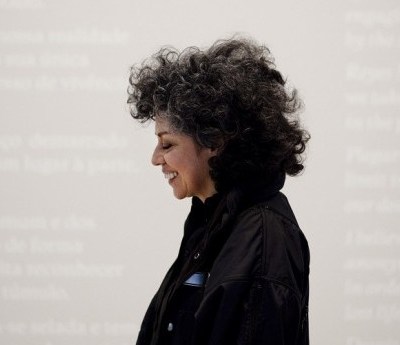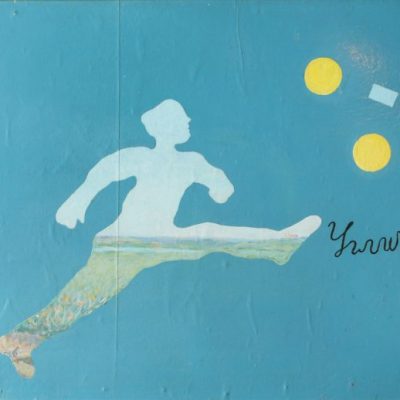From the April issue of Apollo. Preview and subscribe here.
‘We’re being filmed, every moment,’ Christian Boltanski tells me, gesturing around his vast studio in Malakoff, a quiet suburb of Paris where artists such as Sophie Calle and Boltanski’s wife Annette Messager also choose to work. He points to small cylinders attached to the ceiling: cameras installed by Tasmanian gambler and businessman David Walsh, who pays Boltanski a monthly fee of around $2,500 to film him in his studio 24/7 until the end of the artist’s life. The majority of the footage must show a man walking around, pottering and thinking – and it must contain hours of darkness when the studio is locked up and Boltanski is abroad, as he so often is. The Life of C.B. (2009–ongoing) is an unusual project even for an artist whose oeuvre has always been at once deeply personal and evasive. In 1969, a year after his first solo exhibition, Boltanski published a book called Recherche et présentation de tout ce qui reste de mon enfance, 1944–1950 (Investigation and presentation of all that is left of my childhood), which mingles facts with fabrications, combining photographs supposedly of the artist as a child with apparently autobiographical texts.
As I speak to him in his studio, it often seems that Boltanski is still hiding in plain sight. His studio is split-level and the ceiling is full of skylights. There are no frills or home comforts, just projects scattered around in their various stages of completion or demolition, and there are many white cardboard models he has put together himself with glue – for fun, he says, knowing full well he could do this on a computer. Each model represents the space of the museum or site for an upcoming exhibition and the rooms within are filled with miniature versions of his works.
Christian Boltanski in his studio in Paris in March 2018. Photo: © Elizabeth Young
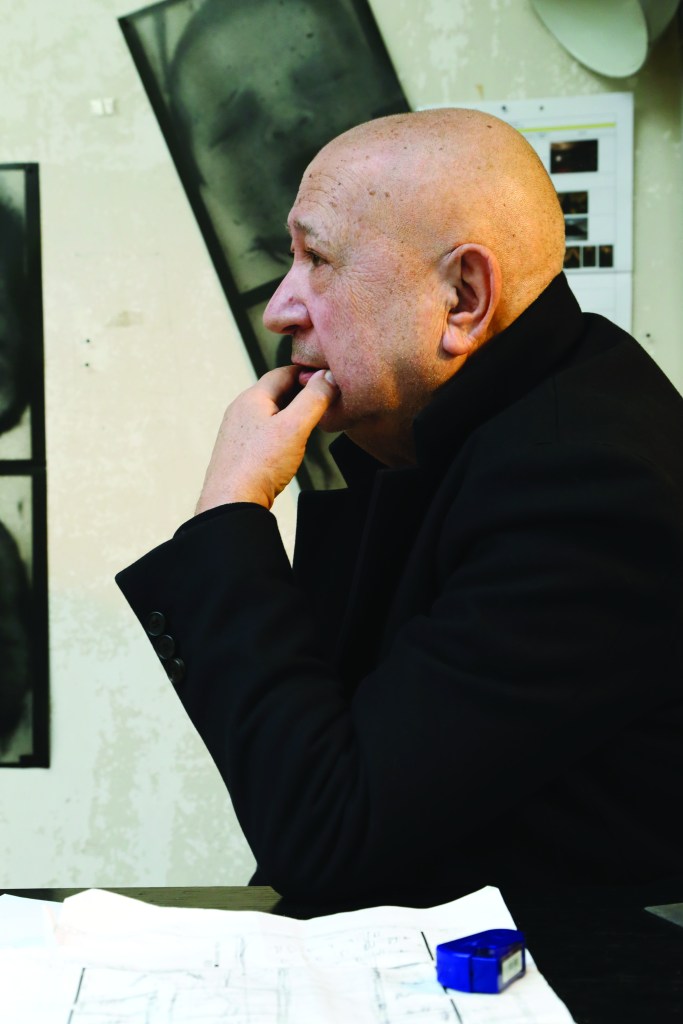
Downstairs as we explore works in progress and remnants of former installations he points to a photograph of himself as a child, ‘with my fat cheeks’. And then to a photograph on the wall of his mother when she was a young woman. A large board on the landing above has two dates painted on it, 1907–89 – his mother’s lifespan. He considers this as good as a portrait: ‘Two dates, connected by a hyphen’ – or more evocatively as it is in French, a trait d’union. As far as he is concerned, the numbers and the punctuation mark do the same work as the lines of a painter’s brush. In the installations for which he is best known, Boltanski is like a collector or archivist – of hundreds of hours of footage, and thousands of heartbeats, photographs, or items salvaged from lost property or charity shops.
Boltanski is a self-taught artist, who – by his own admission and with no suggestion there is something wrong or disappointing in this – has repeated essentially the same few themes since the 1960s. When he was a child, he says, he did not want to leave the house and stopped attending school when he was around 12. He describes himself as a hermit and, had he not grown up in an open-minded bourgeois family in Paris where there were no pressures to behave differently, he believes he would have ended up in an institution. When he showed an interest in drawing his parents bought him materials and with their encouragement he also turned to painting and later experimental films. ‘I made many canvases that are now luckily destroyed; they were very close to outsider art. And then I met people, I grew up, I made strange films and bit by bit I entered into an artistic system.’ This modest account of his career downplays the stature Boltanski now holds in the art world – and the scale and ambition of his projects. His works today sell for hundreds of thousands of dollars and he has a string of major retrospectives coming up at the Israel Museum (1 June–31 October), and in 2019 at the National Art Center in Tokyo and the Pompidou Centre in Paris. Boltanski engagingly compares the process of preparing a retrospective to faire revenir, a phrase often used to describe rustling up a meal from leftovers: ‘You get home in the evening and you’ve got nothing to eat. You open your fridge and there’s a sausage in there, some ham, pâté, I don’t know. An egg. And you bring all that together and in doing so you create something new.’
Animitas (2014), Christian Boltanski, photograph of its installation in the Atacama Desert, Chile. Photo: Madeline Hurtado; courtesy the artist and Marian Goodman Gallery, New York, Paris & London; © Christian Boltanski
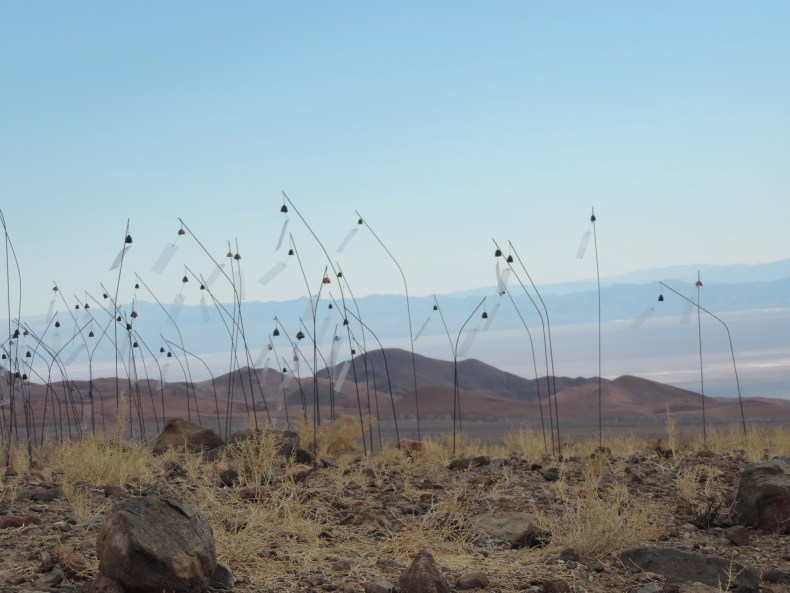
He has made installations in some of the world’s most remote places. Teshima, a sparsely populated island in Japan, holds the recordings of his Heart Archives project (2008–present) in which he has captured the sound of 75,000 heartbeats from people all over the world. In 2014, he placed bells in the Atacama Desert in Chile and in Patagonia in 2017, he built huge horns that, when the wind rushes through them, make sounds like whale songs, as part of Misterios, which will appear with a number of other recent works in a show in London in April at Marian Goodman, in a three-screen video installation (12 April–12 May).
Here in his studio, Boltanski is surrounded by some of the images that have become synonymous with his work, notably the black-and-white photographs of newborn Polish babies, which have been enlarged and cropped so that all we see are their faces. He collected them from the births section of old Polish newspapers and used them first in Chance, the installation he created for the French Pavilion at the Venice Biennale in 2011. The three sections of Chance drew on these photographs in various ways. Wheel of Fortune, a conveyor-belt of portraits resembling the print-run of a newspaper, or a reel of film, moved along 20 tonnes of scaffolding. Every 15 seconds a bell rang and the face of a single baby appeared at random on a large screen. But there was no more than a face to go on: thousands of portraits and no names or hints at what became of these babies. Boltanski hoped that we would fill in the blanks of the installation with our own memories of our childhood, or of our own children. He took the same approach in the other two sections. In Last News from Humans, LED counters displayed the number of births and deaths occurring daily around the world and calcuated the difference; and in Be New, Boltanski created an interactive game in which visitors could compose a new face from the photographs of the newborn babies and from photographs of Swiss adults gathered from newspaper obituary columns. The latter have appeared in their own right in The Reserve of the Dead Swiss (1990).
Wheel of Fortune (2011), Christian Boltanski, photograph of its installation in the French Pavilion at the Venice Biennale. Photo: Didier Plowy; courtesy the artist and Marian Goodman Gallery New York, Paris & London; © Christian Boltanski
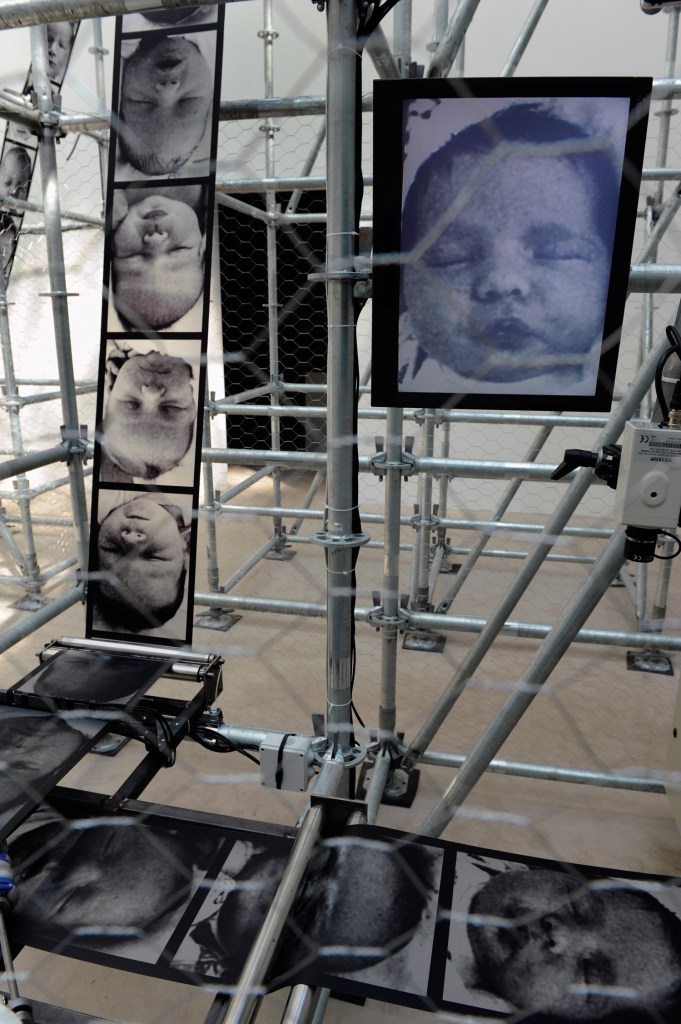
In the studio, among the Polish babies, another black and white photograph catches my eye. This one shows a large group of children of around 10 or 12 years old, who are looking directly at the camera and seem to be watching something we cannot see. Every one of them is laughing or smiling. It was taken in Germany in 1938, Boltanski tells me. All the children were Jewish and it is possible that every single one was deported to the Nazi concentration camps. The idea that we cannot know their names, fates, or what they are laughing at – it could be a pantomime, or a film, or just an engaging photographer working his crowd – seems to trouble and captivate Boltanski.
He was born in 1944 in Paris during the Nazi Occupation. His Jewish father, a doctor, hid under the floorboards of the family home for 19 months and as a child Boltanski would listen to the tales of the Holocaust told by the friends of his family who had also survived. Death, in other words, hung heavily in the air and the Shoah was his founding myth, or, as he calls it, his ‘first trauma’. This has determined the artist he has become. New ideas, he says matter-of-factly, are rare. We have a few in our lifetime, and then keep on repeating them in various ways. ‘Being optimistic I would say I have had three periods in my life,’ he says, referring to creativity. Each one, he explains, is closely linked to a specific event and stage in his life: when he became an adult, when he lost his parents, and when he ‘became old’. The last phase began, he says, about 10 or so years ago. Before then, death had been something that happened to other people, but as he entered his seventies he increasingly had to reckon with his own mortality. Since then, Boltanski’s work has moved away from confronting the horrors of war and the death camps in history. He does not like to think about how he will be remembered, but does enjoy the thought of his works continuing to live in other people – reinterpreted, replayed, reassembled. And his own heartbeat is among those on Teshima Island, and will continue to beat after his death.
In 1995, Boltanski created a work across four sites in New York called Lost: New York Projects. He scattered heaps of used clothing inside a Harlem church (Dispersion), collected and played on a loop testimonies from members of a synagogue in the Lower East Side (What They Remember) and gathered the belongings of an anonymous New Yorker’s apartment – a refrigerator, playing cards, underwear, and cutlery, to display in the New York Historical Society (Inventory). He also visited the Lost Property department at Grand Central Station and exhibited the 5,000 or so items held there in the Incoming Train Room (Lost Property). The keys were what touched him the most, Boltanski tells me. ‘They are nothing because they have lost their story. They are a piece of iron… And yet your keys are so important to you.’ When an object breaks away from its owner, he explains, it can sometimes have a second life (in a charity shop or an art installation); or it can float in the world, ghostlike and redundant. Money, I suggest, is different – if we find five euros in the street we are delighted. He agrees: ‘Amazingly money is the only thing you don’t need to hold on to. Nearly everything has [a] symbolic value of belonging. Money has no belonging. You just want to exchange a bank note for another. Apart from your first dollar there is no sentimental value whatsoever when it comes to money.’
Personnes (2010), Christian Boltanski, photograph documenting its installation at ‘Monumenta’ at the Grand Palais, Paris. Photo: Didier Plowy; courtesy the artist and Marian Goodman Gallery, New York, Paris & London; © Christian Boltanski
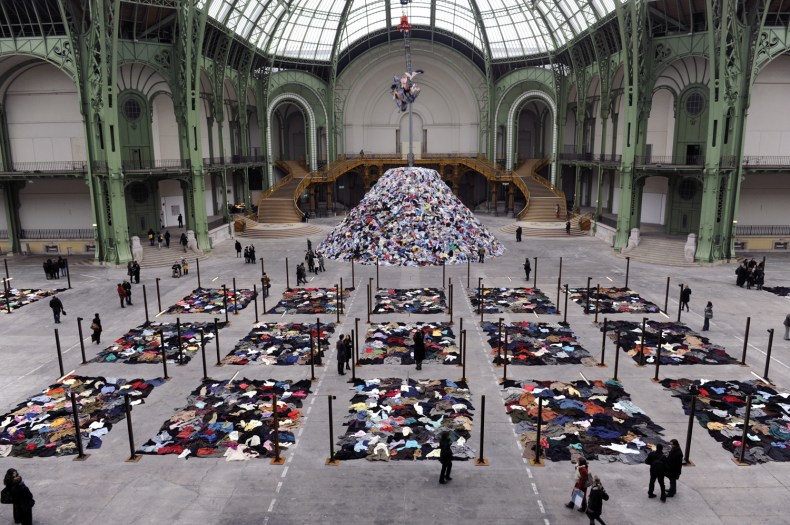
Death has always been at the centre of Boltanski’s work. One of his direct engagements with the Nazi death camps came in Personnes (which means both ‘people’ and ‘nobodies’), a work that could be seen in its most dramatic form at the Grand Palais in Paris in 2010, and subsequently around the world. Inside the glass-domed structure of the Grand Palais, a huge crane lifted and deposited massive piles of used clothing into a series of neat grids, arranged so that visitors could walk around them. In Paris Boltanski specified that the exhibition should be in February and asked the Grand Palais to turn off the heating. People kept their coats on, stuffed their hands in their pockets, hunched their shoulders and generally fixed their eyes to the ground, looking down at what was in front of them; in New York and Tokyo it was hotter and the used clothes gave off a smell. Visitors gazed up at the mountains of clothes and the atmosphere was less oppressive and austere. These variations delight Boltanski, who considers every one of his shows a live performance that runs the risk of failure.
This makes Boltanski’s installations closer to stage plays or what he likes to call ‘musical partitions’, but without the boundaries of duration. He also compares the experience of viewing his installations to a journey in a foreign country: ‘You spend time taking in a space, there are things to look at, sounds to listen to, smells… you stay ten minutes and at the end you go away and back into life. It’s a space where something happens and you can’t understand it exactly and it allows you to think about yourself. For me that’s an exhibition.’ Visitors can spend the time they choose contemplating and experiencing his work – he is not imposing a running time, as in the theatre or cinema. He refers to the latter as ‘an art of time’ compared to photography, which he sees as snapshots out of time. In Personnes and its variants, the emotional and physical response of seeing the work co-existed with its disturbing subject: a machine clearing up the debris of a dehumanised and exterminated people. By making people step carefully through a landscape of destruction, Boltanski did not allow us to lose our sense of ourselves in the space, perhaps even implicating us in the horrors at which he was hinting.
Despite the dark subjects of Boltanski’s work, there is always some warmth, too. His art never deals in pure despair – in tragedy perhaps, but not resignation. In Be Now he revelled in the importance of chance. So much about our lives – our physical features, personalities and predispositions – is down to luck. But for Boltanski, that does not render our actions futile or our aspirations ridiculous; it just makes them more fragile. As he puts it, if our parents had made love two hours later we would be completely different people to who we are. ‘And,’ he says with a smile, ‘isn’t that just crazy?’
From the April issue of Apollo. Preview and subscribe here.

